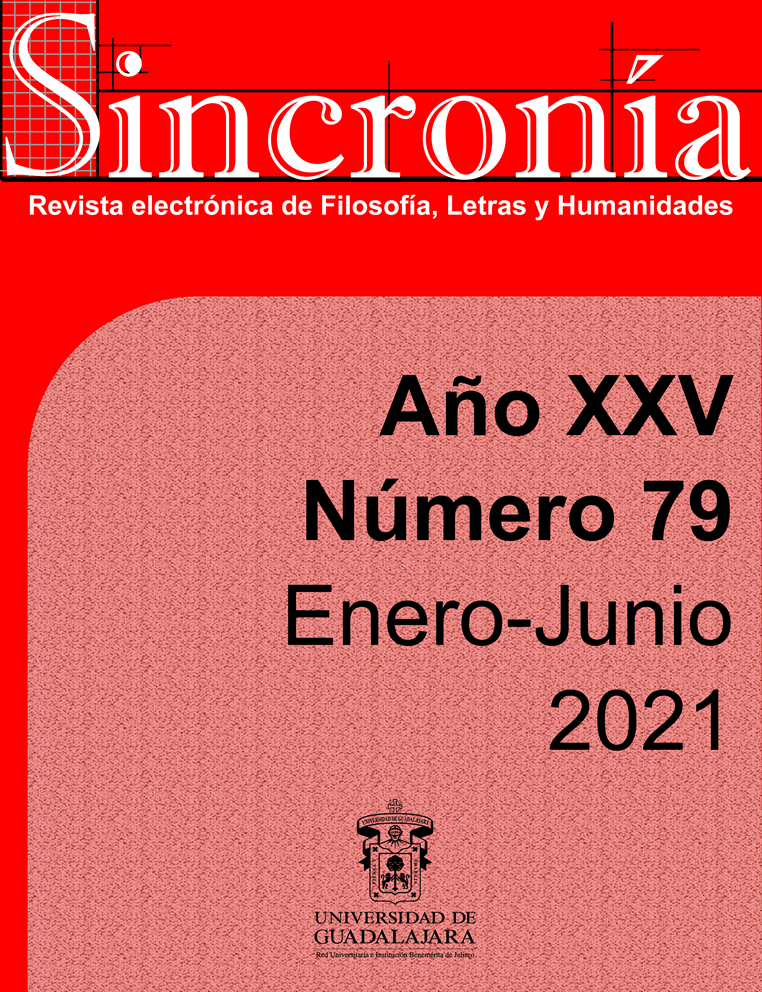Confronting Structures of Oppression: Submission, Resilience and Resistance in The Bluest Eye and The Color Purple
Keywords:
Beauty stereotypes, Self-esteem, Submission., Solidarity.Abstract
This paper focuses on and compares several aspects of the novels The Bluest Eye by Toni Morrison and The Color Purple by Alice Walker. This analysis is preceded by a brief historical background of the times when the action of the novels take place, necessary to understand the history of racial discrimination and the prejudices that sustain this discrimination to our days. The discursion shows the main female characters reacting towards the different forms of oppression and to the systematic suppression of the necessary conditions for the normal development of their self- esteem as human beings. The self-esteem of some of them is so low that they cannot recover; others rise and are able to recover their lost self-esteem. We conclude that the lives of the characters in The Bluest Eye were influenced by racial, social and patriarchal prejudices, prevented from material advancement, and in some cases, how their expectations for a better life were crushed in the end leading them into catastrophic events. In The Color Purple, characters are able to overcome the effects of oppression with the help of the solidarity of women and their personalities can survive almost intact. Thus they show resilience in the face of adversity
Downloads
References
Andujo, P. (2012, June 6). Identity, Self-Respect, and Independence in Walker’s The Color Purple. Bookwormlab. Obtenida el 21 de Abril de 2019 de https://bookwormlab.com/ samples-and-examples/identity-self-respect-independence-walkers-color-purple-essay.html
Bell, A. P., Parker, B. J., & Guy-Sheftall, B. (Eds.). (1979). Study Black Bridges: Visions of Black Women in Literature. USA: Anchor Press.
Byerman, K. (1985). Fingering the Jagged Chain: Tradition and Form in Recent Black Fiction. Athens, Ga.: University of Georgia Press.
Dittmar, L. (1990). "Will the Circle Be Unbroken?" The Politics of Form in "The Bluest Eye". Novel: A Forum on Fiction. 23 (2), pp.137–155.
Domínguez, L. (2014, August). ¿Me ayudaría la Psicología con mi hijo adolescente? Unpublished dissertation. University of Havana.
Draper, J. P. (1992). Black Literature Criticism: Excerpts from Criticism of the Most Significant Works of Black Authors Over the Past 200 Years. New York: Gale Research Press.
García, H. (2011). Controlar las depresiones. La Habana: Editorial Científico-Técnico.
Jacob, O. (January 4, 2014). Self-esteem. University of Oslo. Obtenida el 17 de enero de 2018 de http://www.researchgate.net/publication/27997967
Johnson, C. (1989). Novelist of Memory. Dialogue, 83 (1), 32–37.
Maslow, A. H. (1974). Dominance, Self-esteem, Self-Actualization. USA: Thomas Brooks Cole Publisher.
Morrison, T. (2007). The Bluest Eye. New York: Vintage International Edition.
Morrison, T. (1970). The Bluest Eye. USA: Plume.
Morrison, T. (1993, December 7). The Nobel Prize acceptance speech in Literature. Nobelprize.org. Obtenida el 17 de diciembre de 2015 de http://www.nobelprize.org/nobel_prizes/ literature/laureates/1993/morrisonlecture.html
Morrison T. (2008). What Moves at the Margin. USA: University Press of Mississippi.
Rogers, C. R. (1961). On Becoming a Person: A Psychotherapists’ View of Psychotherapy. New York: Houghton Mifflin Company.
Rosenberg, M. (1965). Society and the Adolescent Self-image. Princeton, NJ: Princeton University Press.
Royster, P. M., & Martin, O. C. (1977). “The Novels of Toni Morrison”. First World, 1 (4), 34.
Steinem, G. (1982). Do You Know This Woman? She Knows You: A Profile on Alice Walker. Ms, 10 (12), 35, 37, 89–94.
Tate, C. (Ed.). (1985). Black Women Writers at Work, USA: Old Castle Books.
Walker, A. (1983). The Color Purple. London: Woman’s Press.
Walker, A. (1984). Good Night Willie Lee, I’ll See You in the Morning. En Mari Evans. Black Women Writers 1950-1980: A Critical Evaluation, 1984, 475.
Washington, M. H. (Ed.). (1990). Black-Eyed Susans and Midnight Birds. New York: Anchor Press.
Wells, D., & Skutches, P. (1987). We Have a Dream. USA: Greenwood Press.
Willis, S. (1987). Specifying: Black Women Writing in American Experience. Madison: University of Wisconsin Press.
Downloads
Published
How to Cite
Issue
Section
License

This work is licensed under a Creative Commons Attribution-NonCommercial 4.0 International License.
You are free to:
- Share — copy and redistribute the material in any medium or format
- Adapt — remix, transform, and build upon the material
- The licensor cannot revoke these freedoms as long as you follow the license terms.
Under the following terms:
- Attribution — You must give appropriate credit , provide a link to the license, and indicate if changes were made . You may do so in any reasonable manner, but not in any way that suggests the licensor endorses you or your use.
- NonCommercial — You may not use the material for commercial purposes .
- No additional restrictions — You may not apply legal terms or technological measures that legally restrict others from doing anything the license permits.



























